BROWN
Novara for Ensemble
Score
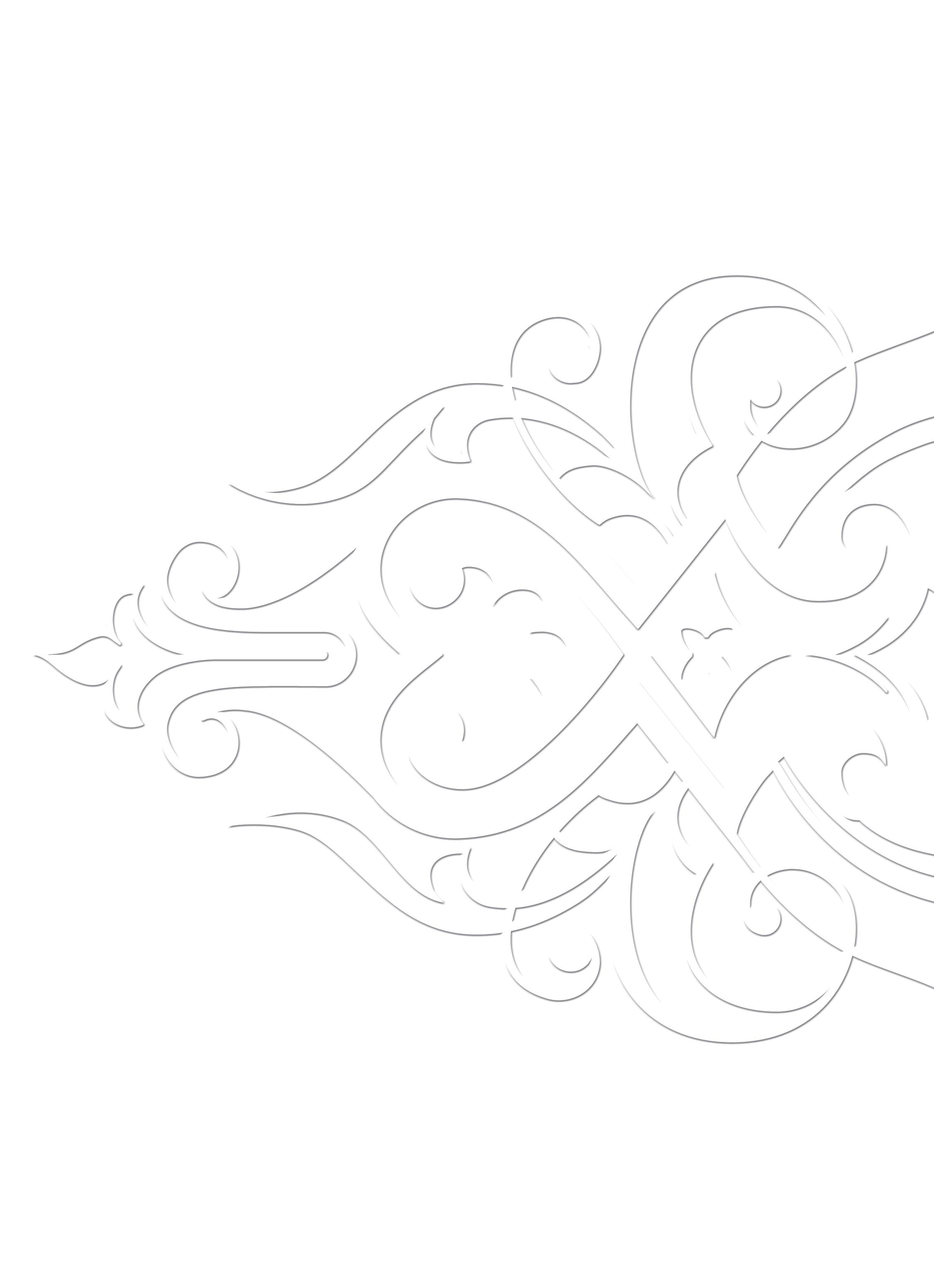

Score

L E I P ZI G · L ONDO N · NE W YOR K
Score (transposed) Instrumentation
Flute
Bass Clarinet
Trumpet in B b
Piano
2 Violins
Viola
Violoncello
Duration: 6 - 12 minutes
The conductor needs an arrow indicator with numbers 1 – 4 (provided with score) to show the musicians which page to perform from.
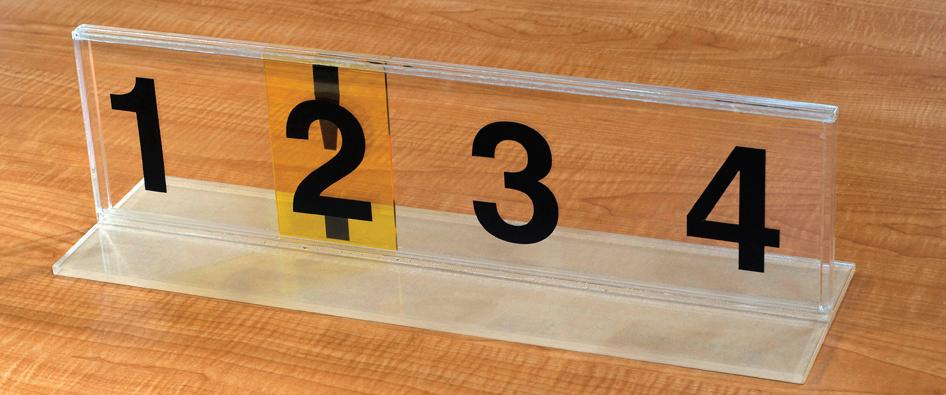
Spontaneous decisions in the performance of a work and the possibility of the composed elements being “mobile” have been of primary interest to me for some time; the former to an extreme degree in FOLIO ( 1952 ), and the latter, most explicitly, in TWENTY FIVE PAGES ( 1953 ). For me, the concept of the elements being mobile was inspired by the mobiles of Alexander Calder, in which, similar to this work, there are basic units subject to innumerable different relationships or forms. The concept of the work being conducted and formed spontaneously in performance was originally inspired by the “action-painting” techniques and works of Jackson Pollock in the late 1940 s, in which the immediacy and directness of “contact” with the material is of great importance and produces such an intensity in the working and in the result. The performance conditions of these works are similar to a painter working spontaneously with a given palette.
The conductor may conduct the events in any sequence or juxtaposition, in changing tempi, loudness and in general mold and form the piece. The inherent flexibility of the materials allows the work to constantly transform itself and re-express its potential, while the sound materials and characteristics which I have composed contain the essential “identity” which makes this work different from any other.
I have felt that the conditions of spontaneity and mobility of elements which I have been working with create a more urgent and intense “communication” throughout the
entire process, from composing to the final realization of a work. I prefer that each “final form,” which each performance necessarily produces, be a collaborative adventure, and that the work and its conditions of human involvement remain a “living” potential of engagement.
The conductor may begin a performance with any event on any page and may proceed from any page to any other page at any time, with or without repetitions or omissions of pages or events, remaining on any page or event as long as he wishes.
The numbers of the score pages to be played from are indicated to the musicians by a movable arrow on a placard displaying the page numbers 1 to 4 — the number and arrow being clearly visible to all members of the group, and the arrow comfortably within reach of the conductor.
It is suggested that the podium be wide enough (or that enough music stands be used as a podium) for all four score pages to fit next to one another so as to be visible to the conductor at all times during the performance. (In the parts, all of the events on all of the pages are visible to the musicians without the necessity of page turns.)
There is a built-in factor of flexibility in the notation and scoring of this piece because the availability of forms is based on letting go of the idea of metric accuracy. This is achieved through the notational system used in this work. This system, which I have called a “time-notation,” is a
development of the work in FOLIO ( 1952 and 1953 ) and most clearly represents sound-relationships in the score as I wish them to exist in performance, independent of a strict pulse or metric system.
It is a “time-notation” (now generally called “proportional notation”) in that the performer’s relationship to the score, and the actual sound in performance, is realized in terms of the performer’s time-sense perception of the relationships defined by the score and not in terms of a rational metric system of additive units. The durations are extended visibly through their complete space-time of sounding and are precise relative to the space-time of the score. It is expected that the performers will observe as closely as possible the “apparent” relationships of sound and silence but act without hesitation on the basis of their perceptions.
It must be understood that the performance is not expected to be a precise translation of the spatial relationships but a relative and more spontaneous realization through the involvement of the performers’ subtly changing perceptions of the spatial relationships. The resulting flexibility and natural deviations from the precise indications in the score are acceptable and in fact integral to the nature of the work. The result is the accurate expression of the actions of people when accuracy is not demanded but “conditioned” as a function within a human process.
The conducting technique is basically one of cueing ; the notation precludes the necessity and function of “beat” in the usual sense (although the conductor does indicate the relative tempo). The page which contains the event to be played is indicated by the arrow, as previously explained. The number of the event to be performed is indicated by the left hand of the conductor — one to five fingers. A conventional (right-hand) down-beat initiates the activity. The relative speed and dynamic intensity with which an event is to be performed is implied by the speed and largeness of the down-beat as given with the right hand. Nearly all of the events in the score have been assigned dynamic values. These are acoustically accurate in terms of instrumental and ensemble sonority and balance and must be respected as written, although the conductor may “over-ride” the indicated dynamic values and raise or lower the over-all loudness.
The “graphic” notations as in events 4 and 5 on page 3 are a generalized way of indicating instrumental activity and non-characteristic sounds. Observe very carefully the character and rhythm of the graphics, the verbal indication of technique of articulations, and the approximate frequencies covered by the rise and fall of the graphic line. All sounds are basically delicate and microtonal.
The conception of the work is that the score presents specific material having different characteristics, and that this material is subject to many inherent modifications, such as modifications of combinations
(event plus event), sequences, dynamics, and tempos, spontaneously created during the performance. All events are always prepared by a left-hand signal and initiated by a down-beat from the conductor; the size and rapidity of the down-beat implies the loudness and speed with which the event is to be performed. The conductor must, as with any notation, insist on accurately articulated relationships from the rhythmic “shape” of phrase and pitch sequences in this work.
conducted fermata : the conductor may introduce a fermata at any time during the performance, in any single event or combination of events. Both hands cupped towards the orchestra and held stationary indicates that all musicians in that group should hold the sound or silence which they are at that moment performing, until the next sign from the conductor tells them either to cut off or to continue from the point of interruption. A cut-off is signaled with both hands and must be followed by another event-signal from the left hand and a downbeat. To continue , the conductor moves both hands from the “hold” position back to the body and then outward towards the orchestra, palms up (as if giving the initiative back to the orchestra).
conducted stop : the conductor may stop any event or combination of events at any time during the performance. The normal, two-hand cut-off signal will silence his entire group. Leaving the hands up will hold that silence until the signal to continue from the point of interruption is given. If the hands do not remain up
in “hold” position, the musicians are to expect another event-signal from the left hand, and a down-beat.
modification of single event : any two-hand cut-off signal affects the entire group. The conductor may wish, however, to modify only one event among two or more events being performed simultaneously. To do this he signals the number of the event to be modified with his left hand; then indicates the modification — a hold or cut-off — with only his right hand. (Events not indicated by the fingers of the conductor’s left hand continue to proceed normally.) It is absolutely essential that the orchestra members clearly understand this difference in signaling: a hold or cut-off by both hands affects an entire group; a hold or cut-off by only the right hand affects only the event indicated by the fingers of the left hand. Players whose parts do not contain events signaled by the conductor’s left hand must remain unaffected by his subsequent right-hand indications.
As soon as the conductor initiates (by left-hand eventsignal and right-hand down-beat) a new event that appears on the player’s part, the preceding event is automatically cancelled. No specific stop-signal is required. The player simply discontinues the event he is playing and, without break between events, begins to play the new one.
With these procedures clearly understood by the conductor and the musicians it is possible to achieve smooth transitions and long lines of connected material of extreme complexity and frequent modification. The first
impression derived from the score will be one of many sporadic fragments. This wealth of fragments shows the numerous formal possibilities inherent in the work, and it is this realization, not the fragmentations, that must become the dominant characteristic of performance.
All indications of dynamics are relative to the instrumental technique and register of the particular sound called for, i.e., a string sound to be played col legno tratto , sul ponticello , with a dynamic of ffff, must be played as loudly as possible regardless of the dynamic intensity produced by the same dynamic marking in an instrument of a different nature. Thus, a low C in the Flute marked ffff is not expected to have the same volume as a middle-register tone marked ffff in a clarinet. This simply means that the flutist is to play his tones at the maximum volume available in that register of his instrument. The pppp indicates that the sound is to be as soft as possible. All dynamic indications are “balanced” in this way, relative to their acoustic functions within the event-structures and the characteristics of the instruments employed in them.
Comments and Suggestions to the Conductor: Page 1 , event 1 : Best rather legato and moderately fast or fast tempo.
2 : Highly percussive. Equal balance between violin and piano; any tempo.
3 : Highly articulate, “string trio character;” elegant, legato and percussive; any tempo.
4 : Staccato-percussive “loop” (repeating texture).
5 : Somewhat more legato, “loop” (repeating texture). Vary tempi and loudness, with stops, starts, bursts, etc.
Page 2 , event 1 : All instruments very legato, “soft” articulation. Instruments equally balanced dynamically as a “single sound” of 8 “loops.” As the loops continue the instruments get “out of sync” and automatically re-align into different vertical sonorities. Introduce fermata, stops, starts, vary tempi and loudness, etc. “Warm” ensemble textures.
2 : Percussive and staccato “pyramid.”
3 : Basically quiet, legato “pyramid.” In first rehearsals of events 2 & 3 , give musicians each entrance until they learn their relative (not exact) entrance positions (pizz. entrances in 3 are slightly staggered, not simultaneous).
Page 3, events 1, 2 & 3 : Three different “chords.”
1 & 3: The timbre transforms during the sounding.
2: “Pure” sound.
4: Wind sound only, through the instruments, producing no tone; changing to percussive wind and key/ valve slap. Follow rise and fall and rhythm of graphics as much as possible. (not a repeating “loop” texture).
5 : Vln. 2 and viola, using all 4 strings on “wrong” side of bridge; a kind of “nervous,” semi-tremolo effect; following rhythm and approximate pitch of graphics.
Page 4 , event 1 : A rather “loose,” semi-articulate, “noisy” trio. Improvisatory sounding but following timbre, rhythm and graphic indications.
2 : A five instrument, random rhythm, chordal effect; as resonant as possible. Musicians acting and reacting freely in a kind of “conversational” style, but “looping” in the given sequences of chords.
3 : A tight tone cluster with different rates of speed of movement within it…looping (introduce fermata, speed up, slow down, stops, dynamic changes, etc.).
4 : A quiet sound.
5 : A duet.
After considerable rehearsal, sufficient for the musicians to feel secure in their flexible but very accurate relationships to one another in each event as they appear on the pages of the score, it is possible for the conductor to use some of the individual lines of the events as solos. For example, in event 5 of page 3, after the string quartet can perform the event very accurately as a four-part quartet event (as in the score but slightly different each time in vertical alignments as is natural in the non-metric notation) the conductor may use one or more of the lines as solos or in other than scored juxtapositions. For the “as written” quartet event the conductor signals 5 with his left hand to the 4 string players as a group (sweeping the signal in front of all 4). For only one of the lines as a solo the conductor indicates 5 with the left hand and points directly at the soloist with the right hand, before making the down-beat with that hand. The four lines can thus be performed one after the other or, for example, the following kind of overlapping:
A Sample Continuity and the Results of Juxtaposition:
Likewise, the 1 st violin part of event 5 could be superimposed on only the flute line of event 4 , etc., as obviously the entire trio of 4 and the quartet of 5 could be performed simultaneously. This possibility considerably expands the formal potentials of any performance but I insist that the formal integrity of the events as they are scored be maintained for the most part. The events, as scored, give the work a strong identity as NOVARA and the individual lines as solos should be used only as variations on the identifiable events, as scored
Page 2 : Event 1 is started and allowed to “loop” for some seconds by itself. Conductor indicates 4 with left hand (preparing pianist) then gives down-beat with right hand; pianist plays event 4 and other musicians continue to loop event 1 ; conductor then indicates 5 with left hand (preparing violins 1 and 2 ), then gives right hand down-beat for event 5 to begin; the three winds and viola and cello continue to loop in event 1 while violins 1 and 2 play the duet of event 5 : violins 1 and 2 reach the last sounds of event 5 and hold (fermata); other instruments with the exception of piano (having finished the non-repeating 4 ) continue event 1 ; conductor adds event 2 (preparing as before) and piano and 3 winds play event 2 , winds arriving at the fermata on their last notes: we now have violins 1 and 2 and the three winds sustaining (winds breathing when necessary and re-attacking the notes), the piano silent, and only the viola and cello still “looping” in event 1 . The conductor adds event 3 , on the down-beat of which violins 1 and 2 automatically leave the fermata of event 5 and perform event 3 as written, (there is finally no one any longer on event 1 ) ending with the four-note fermata. We now have the 3 winds and the 4 strings holding their respective notes (a sustained chord, in effect); the conductor adds the piano event 4 over the chord; while pianist performs event 4 , the conductor moves the page indicator-arrow to indicate whatever next page he wishes, prepares with his left hand the event he wishes on that page, and on the right hand down-beat, that event will begin. Whatever instruments are not in that next event on the next indicated page will continue to sustain their previous notes until specifically cut off or are given an event that they must play on the new page.
In all of this long sequence there has been a continuous stream of sound.
NOVARA was composed, at the request of Lukas Foss, for a Fromm concert at the Tanglewood Festival in the summer of 1962, and the first performance was conducted there by the composer. The work was written just after the composing and Venice premiere of AVAILABLE FORMS II (for 98 instruments and two conductors), and is a kind of “relaxing” into the intimacy and delicacy of chamber music and soloistic possibilities after the very large resources and massed orchestral sounds of that work. NOVARA is an “open-form” work and uses many of the less characteristic sounds of the instruments that are sometimes referred to as “noises” but are nevertheless instrumental sounds which can extend the formal and expressive potential of the work. “Open-form” means that all of the sound materials in the work are notated and controlled in the score but that their sequence, juxtaposition, tempi and repetition are left to the spontaneous (during the performance) decisions of the conductor as the performing process develops and unfolds between himself, the sound materials and the musicians. The form of the work is therefore unique in each performance but it is always NOVARA because only those composed sound events may be used.
Earle Brown


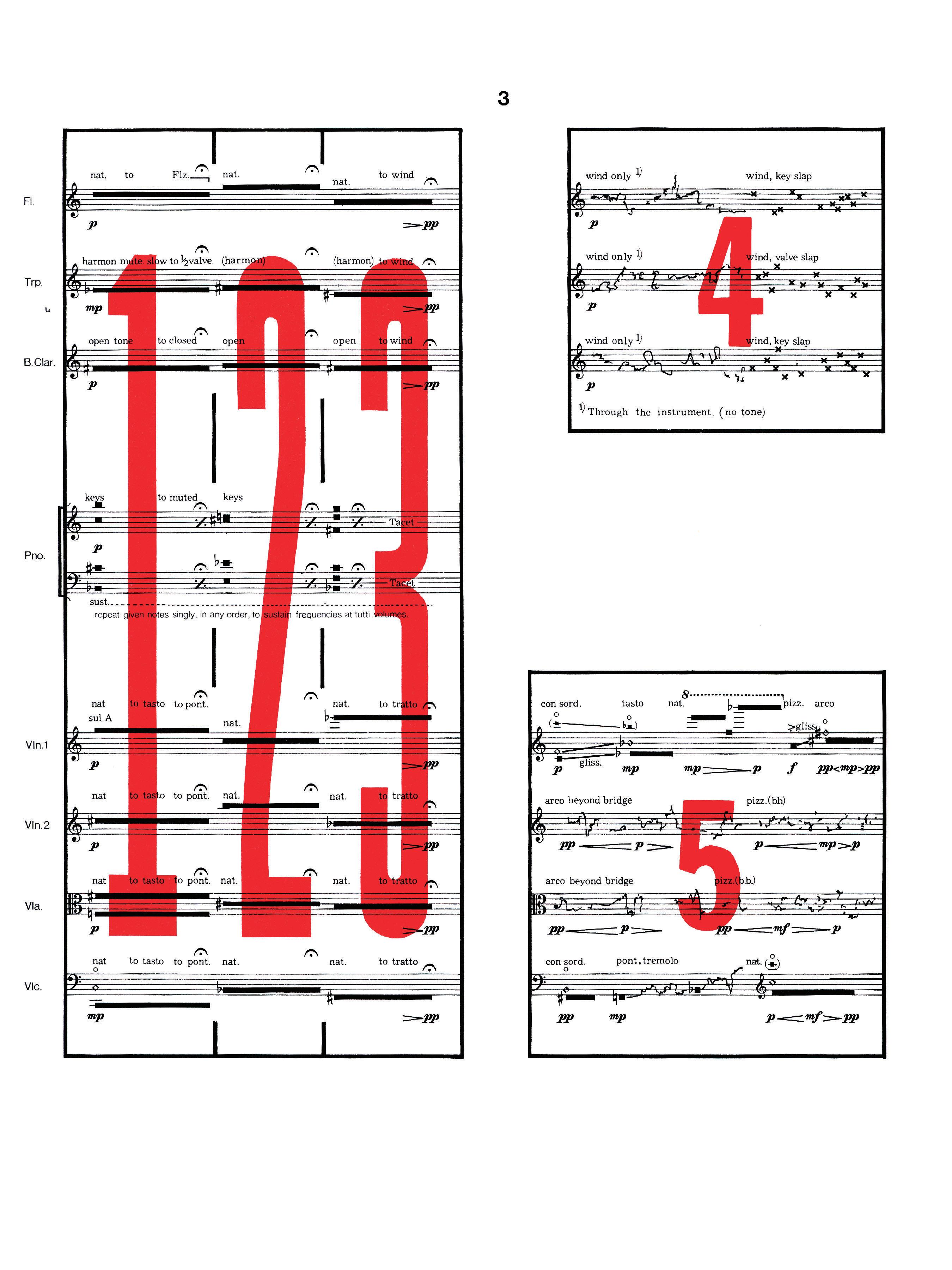
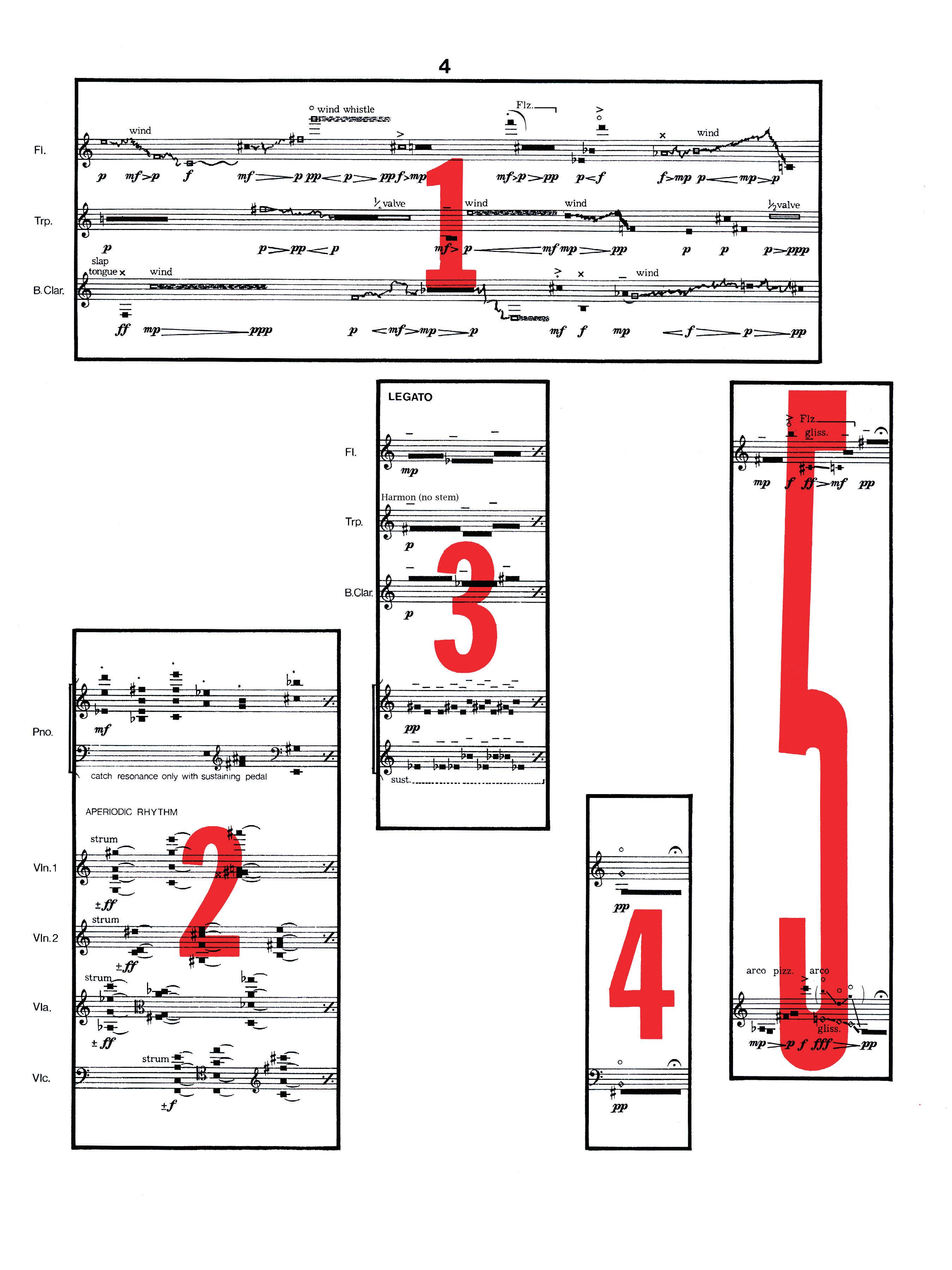
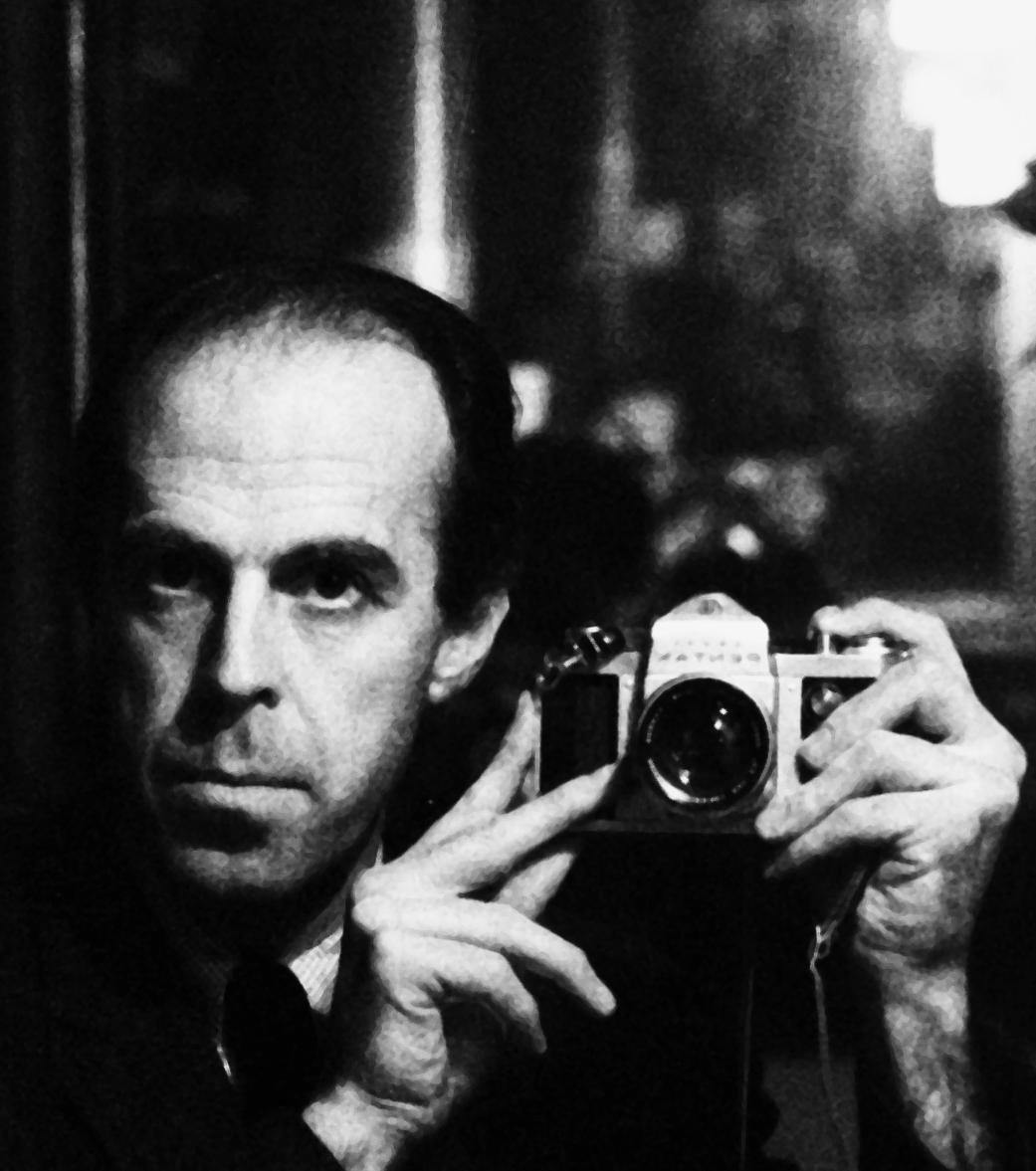
Earle Brown was born in 1926 in Lunenburg, Massachusetts, and in spirit remained a New Englander throughout his life. A major force in contemporary music and a leading composer of the American avantgarde since the 1950s, he was associated with the experimental composers John Cage, Morton Feldman and Christian Wolff, who – together with Brown – came to be known as members of the New York School. Brown died in 2002 at his home in Rye, New York.
Earle Brown wurde 1926 in Lunenburg, Massachusetts, geboren und blieb im Geist ein Leben lang Neuengländer. Ab den 1950er Jahren war er eine treibende Kraft in der zeitgenössischen Musik und einer der führenden Komponisten der amerikanischen Avantgarde. Enge Verbindung unterhielt er zu den experimentellen Komponisten John Cage, Morton Feldman und Christian Wolff, mit denen gemeinsam er später der sogenannten New York School zugerechnet wurde. Brown starb 2002 in seinem Haus in Rye, New York.